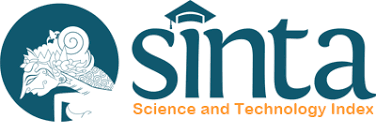BETWEEN AGRICULTURE AND COAL MINING: A STUDY OF THE LAND GRABBING IN THE SUB-DISTRICT OF TENGGARONG SEBERANG
DOI:
https://doi.org/10.14203/jmb.v17i2.285Abstract
Tenggarong Seberang subdistrict had been an agriculture area since the 1980s which was started when migrants were located there. The subdistrict had ever been a rice granary for Kutai Kartanegara Regency. To support the agricultural activity, the regency goverment developed a rice processing unit to increase the quality of rice from that place. However, while the coal mining activity around Tenggarong Seberang is increasing, at the same time the agricultural land has changed its function become a mining concession. Land grabbing has emerged between peasants who are consistant to work in agriculture and those who see the mining as an economic sector which will bring a more advance life. This paper attempts to understand how the peasants survive in their agricultural activity with all obstacles and from mining industry which continuously push to the agricultural areas. This paper is based on the research conducted in 2014. Keywords: agriculture, mining, competition, and political ecologyDownloads
References
Ansoms, A. & Claessens, K. (2011). “Land relation and local livelihoods in the Great Lakes Regionâ€, dalam A. Ansoms dan S. Marysse (Eds.) Natural
Resources and Local Livelihoods in the Great Lakes Region of Africa: A
Political Economy Perspective (hlm. 3-25). Great Britain: PALGRAVE
MACMILLAN. crossref
BPS. (2012). Kecamatan Tenggarong Seberang Dalam Angka 2012. Tenggarong: Badan Pusat Statistik Kabupaten Kutai Kartanegara.
Bintoro, A. (2014). “Di Kaltim banyak pilihan, ogah jadi petani padi†diunduh dari http://kaltim.tribunnews.com/. pada 3 Juni 2014.
Doolittle, A.A. (2011). “Redefining native customary law. Struggles over property rights between native peoples and colonial rulers in Sabah, Malaysia, 1950-1966â€, dalam M. R. Dove, P. E. Sajise, & A. A. Doolittle (Eds.) Beyond the Sacred Forest (hlm. 151-179). Durham dan London: Duke University Press. crossref
Homewood, K., Kristjanson, P., & Trench, P.C. (2009). “Canging land use, livelihoods, and wildlife conservation in Maasailandâ€, dalam K. Homewood,
dkk. (Eds.) Staying Maasai? (hlm. 1-42). LLC: Springer Science dan
Business Media.
Geenen, S. (2011). “Constraints, opportunities and hope: artisanal gold mining and trade in South Kivu (DRC)â€. Dalam A. Ansoms dan S. Marysse (Eds.) Natural Resources and Local Livelihoods in the Great Lakes Region of Africa: A Political Economy Perspective (hlm.192-214). Great Britain: PALGRAVE MACMILLAN. crossref
Genske, D.D. (2003). Urban Land: Degradation, Investigation, Remediation. Verlag, Berlin, Heidelberg: Springer.
Grizzetti, B., Bouraoui, f., Gooch, G.D. & Stálnacke, P. (2010). “Putting the
‘integration’ in the science-policystakeholders interfaceâ€. Dalam G.D.
Gooch, dan P. Stálnacke (Ed.) Science, Policy, and Stakeholders in Water
Management: An Integrated Approach to River Basin Management (hlm. 17-28). London dan Washington, D.C.:Earthscan.
“Inilah 10 Negara Produsen Batubara Terbesar di Duniaâ€. (2012). Diunduh dari http://energitoday.com/2012/09/29/inilah-10-negara-produsen-batubaraterbesar-di-dunia/ pada 1 Juli 2014.
Li, T.M. (2002). “Keterpinggiran, kekuasaan dan produksi: Analisis terhadap
transformasi daerah pedalamanâ€, dalam Tania Murray Li (Ed.) Proses
Transformasi Daerah Pedalaman di Indonesia (hlm. 3-74). Jakarta: Yayasan Obor Indonesia.
Issue
Section
Authors who publish with this journal agree to the following terms:
- The copyright for articles in this journal is retained by the authors.
- Authors grant to the journal first publication rights and the right to distribute the article, including the journal's web site, online data bases and other similar forms.
- Authors agree to license their work according to Creative Commons Attribution-NonCommercial-NoDerivatives 4.0 International License.
- Articles published in JMB are free to use for non-commercial uses as long as the authors and the journal are attributed properly and the new creations are licensed under the indentical terms (license Creative Commons (CC BY-NC-ND 4.0).
- Authors retain the right to reproduce and distribute their articles in any format, without prior authorization, with the proper acknowledgment to the first publication.
- If the article contains copyright material owned by others, authors should obtain written permission from the copyright owner/s in order to reuse the material. Appropriate acknowledgment should be included.
- Authors are encouraged to post their article online (in institutional repositories, personal websites etc). Any such posting must include a reference and a link to the journal's website.
Penulis yang menerbitkan pada jurnal ini menyetujui ketentuan berikut:
- Hak cipta untuk artikel dalam jurnal ini disimpan oleh penulis.
- Penulis memberikan kepada jurnal hak publikasi pertama dan hak untuk mendistribusikan artikel, termasuk situs web jurnal, basis data online dan bentuk serupa lainnya.
- Penulis setuju untuk melisensikan karya mereka sesuai dengan Creative Commons Attribution-NonCommercial-NoDerivatives 4.0 International License.
- Artikel yang diterbitkan dalam JMB bebas digunakan untuk penggunaan non-komersial selama penulis dan jurnal dikaitkan dengan benar dan kreasi baru dilisensikan menurut istilah indentis (lisensi Creative Commons (CC BY-NC-ND 4.0).
- Penulis mempertahankan hak untuk mereproduksi dan mendistribusikan artikel mereka dalam format apa pun, tanpa izin sebelumnya, dengan pengakuan yang tepat untuk publikasi pertama.
- Jika artikel tersebut berisi materi hak cipta yang dimiliki oleh orang lain, penulis harus mendapatkan izin tertulis dari pemilik hak cipta untuk menggunakan kembali materi tersebut. Pengakuan yang tepat harus disertakan.
- Penulis didorong untuk memposting artikel mereka secara online (dalam repositori institusional, situs web pribadi dll). Setiap posting seperti itu harus menyertakan referensi dan tautan ke situs web jurnal.

.png)









